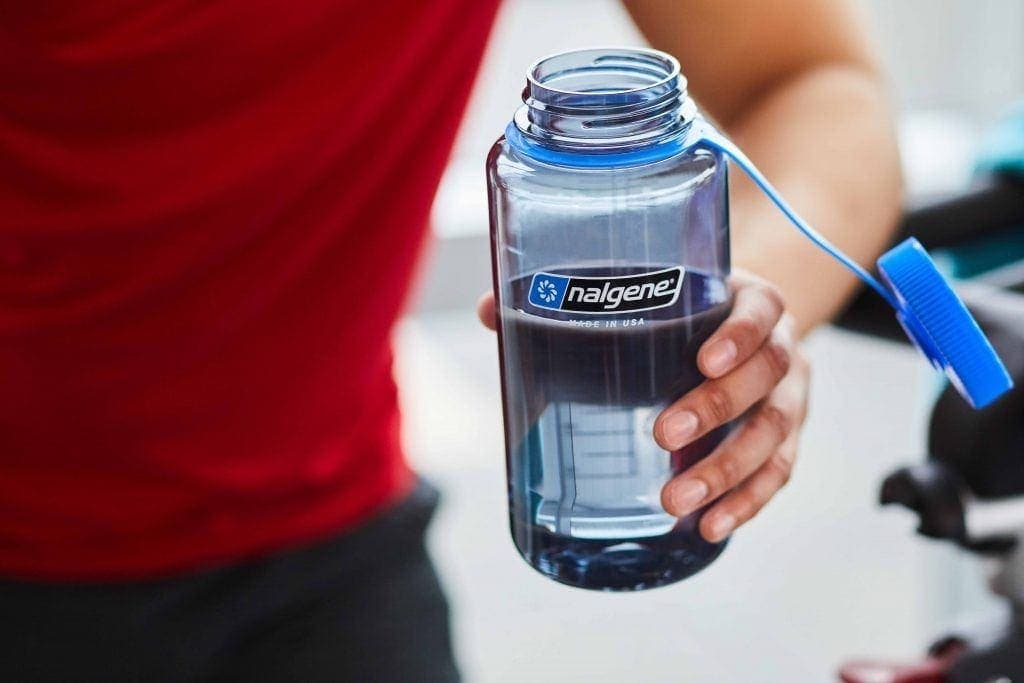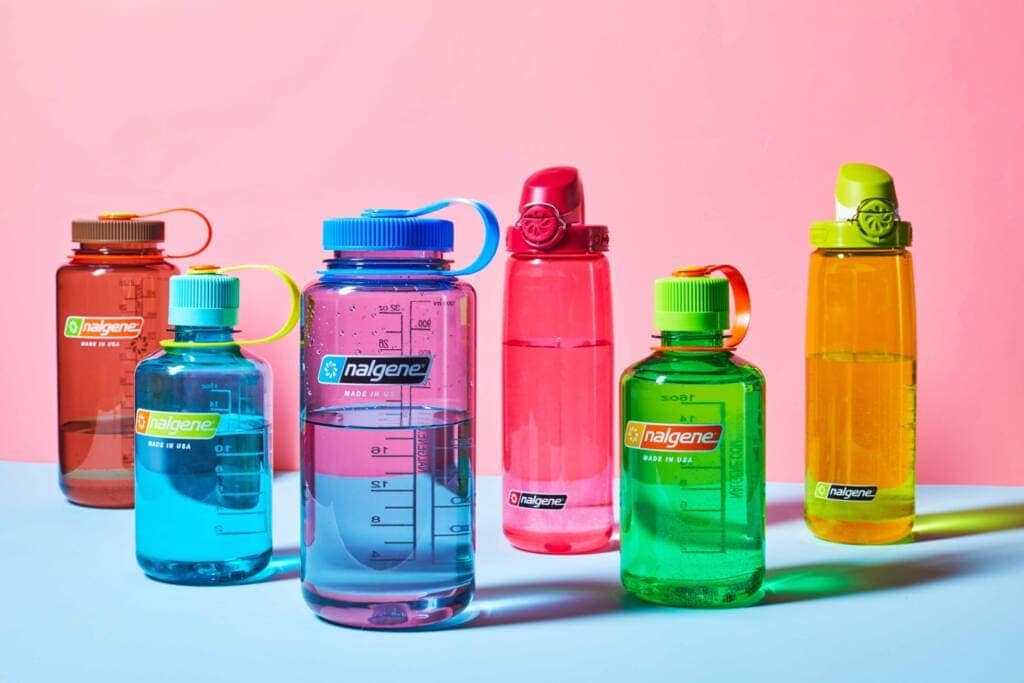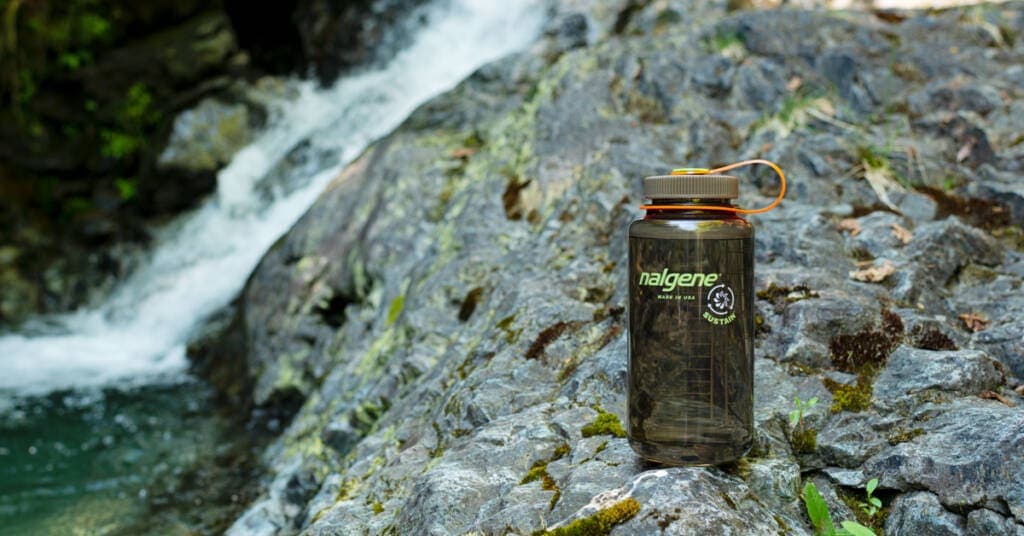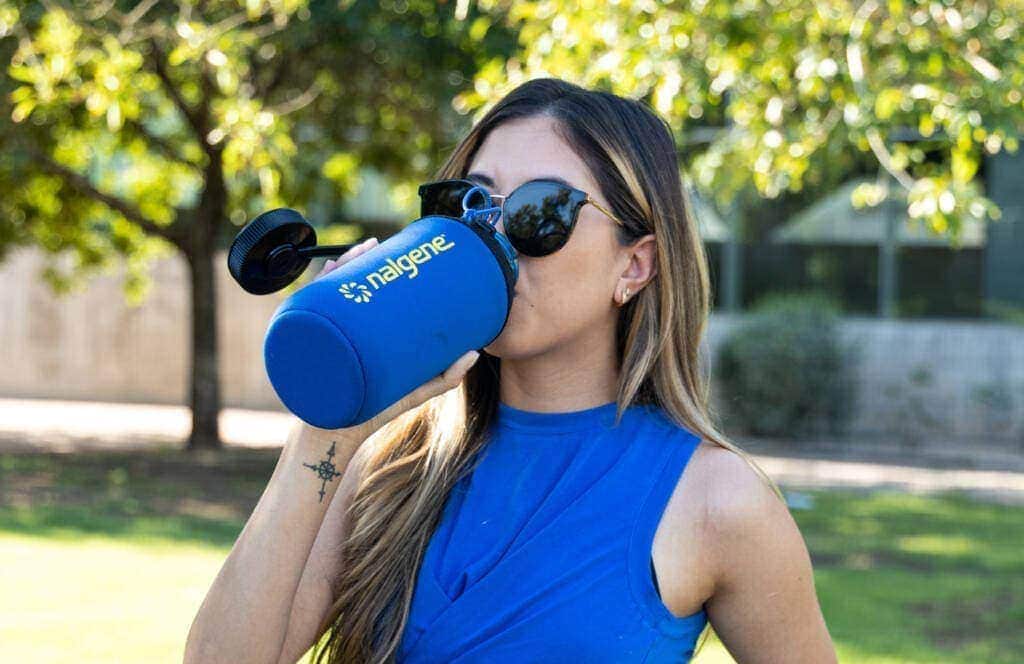Let’s Find Out What We’re Made of: Getting to Know Tritan
Not all plastics are created equal, and we’d like you to really get to know what your Nalgene bottle is made of. Because the fact of the matter is, your Nalgene bottle is anything but ordinary. That’s in big part thanks to Tritan.
You probably already know that your Nalgene bottle is ready for anything, and that it’s durable, stylish, and can come in different shapes and sizes. But you may not have known that your Nalgene bottle is also made of Tritan, which is basically a next-level plastic that is simply engineered to be better. Tritan isn’t like “those other plastics,” and it’s known for being stronger, more sustainable, and more innovative than other options.
Aside from regular Tritan, which is incredible on its own, there’s also the Tritan Renew line, which is made up of up to 50% recycled materials. Part of Nalgene Outdoor’s mission is to encourage “refill, not landfill,” in order to reduce the amount of single-use water bottles that are thrown away. In the United States alone, that number is 2.5 million plastic bottles, per hour.

Nalgene Outdoor first introduced Tritan Renew to our bottles with our “Sustain” line. But we have some big news: we’re proud to announce that we are fully transitioning to making all of our Nalgene bottles with Tritan Renew. That means every Nalgene bottle will have rescued and reused some plastic that was destined for the trash.
That’s something worth raising a bottle of crisp cool water to.
So, let’s peel back what Nalgene bottles are made of. We think you’re going to like what you find.
Out With the Old: What’s up With Traditional Plastic Bottles?
In order to best understand how special Tritian is, and why it makes Nalgene bottles unlike any other, it’s important to understand the basics when it comes to traditional plastic bottles. Because the real question is: is all plastic the same?
The short answer: definitely not.
When plastics were created in 1869, they were a major game-changer, because prior to this, only natural materials were readily available. These were heavy, expensive, in finite supply, and even controversial (like ivory). The creation of synthetic polymers was seen as brilliant, and plastics became a sturdy, lightweight, and inexpensive option with endless possibilities.
But since the mass production of plastics started just six decades ago, the latest figures show that humans have produced more than 8.3 billion metric tons of it. And in just the past few decades, single-use plastic water bottles exploded in popularity. These little bottles have contributed a lot to the production of plastic.
But what exactly are plastic bottles made of? Let’s get into some of the science of plastic bottles. Most single-use plastic water bottles are made from a type of plastic called PET, or polyethylene terephthalate. Small pellets of this clear, strong plastic are melted down to form single-use bottles.
Different types of bottles are made of different plastics. For example, milk jugs are often made from PP (Polypropylene), which can only be made translucent. Reusable bottles are often made from a different type of plastic, high-density polyethylene (HDPE). This plastic is strong, and forms a powerful moisture barrier.
Whether it’s single-use or intended for refilling, we can tell what a plastic bottle is made up of by its resin identification code, which is that little number in a triangle that you see on your plastic bottles.

How Tritan Stacks Up
Single-use bottles aren’t designed to be reused, and because of that, they can easily wear and break down. Reusable bottles are built differently to begin with, but then there’s Tritan (that’s what we’re made of). Tritan is unlike any other type of reusable plastics, especially when it comes to Tritan Renew (which we’ll dive into later).
Here’s what you need to know about Tritan:
- Tritan is a BPA-free plastic. That means it doesn’t contain BPA, BPS or any other bisphenols.
- Tritan is tough and built to last, making it perfect for the trail, climbing, or wherever your next adventure takes you. That means you can have it for years to come, potentially reducing waste. It’s also impact resistant, so it’s prepared for life’s tumbles and stumbles.
- It’s lighter and sturdier than other materials used for bottles, such as glass. That means you can easily add it to your backpack, without adding too much weight, or being worried about it shattering.
- Tritan is superior when it comes to safety and performance. It also has exceptional dishwasher durability, encouraging proper cleaning to keep your bottles safe and in good shape.
- Tritan Renew has everything you love about regular Tritan, and also creates new life from old waste. More on that in a moment.
Basically, Tritan is lightyears ahead of other plastics, which is why Nalgene Outdoor is proud to make our bottles with it.
How Tritan Renew Makes a Difference
Tritan Renew is an incredible plastic that has the power to make a difference in a few different ways, from the way we create our bottles to the overall health of the planet. Our “Sustain” line originally introduced Nalgene bottles made with Tritan Renew to the world. We’re proud that we were the first to bring this new resin to the market, and it impressed us all with it’s next-generation recycling technology that transforms plastic destined for landfills into the high-performance BPA/BPS-free bottles you know and love.
Nalgene Outdoor was Born from Science, and our labware scientists realized they had a standout bottle on their hands when they started taking their laboratory bottles on backpacking trips. So you could say we’ve always been an innovative company, which is why using Tritan Renew in our all Nalgene bottles simply makes sense.

Going forward, you’re going to find all of our Nalgene bottles will be made with Tritan Renew.
And yes, we’re just as excited as you are.
Here are just some of the reasons why Tritan Renew is such an incredible plastic:
Made with recycled materials: First and foremost, Tritan Renew is made up of up to 50% certified recycled content. That means we’re taking bottles destined for landfills, and turning them into brand-new bottles.
Just as tough and safe: Tritan Renew is the same tough and rugged material that you know and love. And of course, this material still passes all of the most stringent safety testing, and it’s still BPA-free.
It’s not the end of the line: Tritan Renew is created with an innovative process that breaks down plastic waste into the basic chemical building blocks of plastic. That means these materials can be recycled again and again.
Transforming single-use plastic waste into durable Nalgene bottles allows us to reduce the use of single-use plastic bottles, offset the use of fossil fuels, and lower greenhouse gas emissions. You can drink easily knowing that your Nalgene bottle helped save plastics from the trash and from the oceans, that it’ll last for years to come, and that it has a long future ahead of it.




